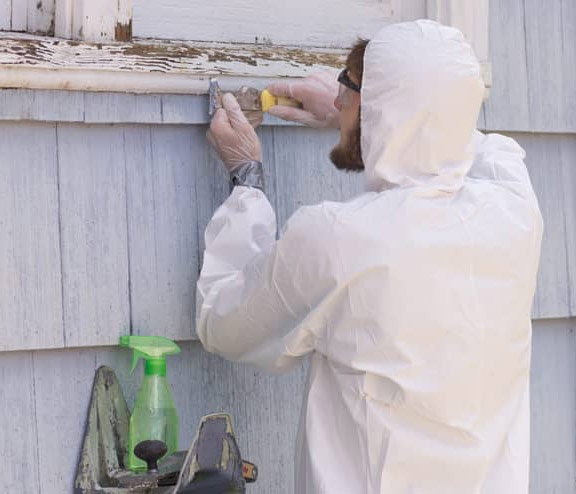Step-by-Step Refine for Successful Lead Infraction Removal
Resolving lead violations demands a precise and structured method to make sure both security and regulatory compliance. The journey begins with the precise discovery and analysis of contamination resources, making use of sophisticated analysis tools. Following this, adherence to federal and state policies is extremely important to formulating a reliable removal strategy. Such a plan must information the particular techniques and timelines for action. The actual removal calls for proficient employees to apply these strategies while strictly complying with safety protocols. Yet what happens after the removal is finished? The answer depends on recognizing the necessary post-remediation techniques that make sure lasting security and community health.

Discovery and Evaluation
Discovery and assessment are critical action in the removal of lead offenses. To make sure an effective remediation procedure, it is vital to perform a comprehensive assessment of the atmosphere where possible lead exposure exists. The initial stage of detection includes recognizing resources of lead contamination, which can be found in paint, pipes, dirt, and dust. Using innovative analysis tools such as X-ray fluorescence (XRF) analyzers and atomic absorption spectroscopy (AAS) can provide specific dimensions of lead concentrations.
This includes assessing the extent and seriousness of contamination, as well as recognizing populations at danger, especially youngsters and expectant women. The gathered information must be carefully recorded to support the advancement of an efficient remediation approach.
In addition, it is essential to prioritize locations with the greatest levels of contamination and those that posture the best health and wellness dangers. Reliable interaction with stakeholders, consisting of building owners, homeowners, and public health and wellness officials, is critical for making sure that all parties are educated concerning the searchings for and the subsequent actions required for removal. This initial discovery and analysis stage prepares for a successful lead infraction removal procedure.

Legal and Regulative Conformity
Navigating the landscape of lawful and governing compliance is an essential aspect of effective lead offense remediation. Compliance makes certain not only the safety and security of afflicted populaces however also the integrity and lawful standing of the organization accountable for removal.
This involves meticulous documentation of all removal tasks to show conformity. Failing to adhere to these regulations can result in severe charges, consisting of hefty penalties, legal activity, and reputational damage.
Engaging legal professionals specialized in ecological legislation can help with browsing these complexities. Routine training and accreditation for all employees associated with the remediation procedure are also necessary to guarantee adherence to safety and governing requirements. By prioritizing lawful and regulative compliance, companies can efficiently mitigate threats and accomplish an effective removal end result.
Planning the Remediation
Properly planning the remediation of lead offenses begins with a comprehensive assessment of the polluted website. This data-driven strategy guarantees that remediation initiatives are Visit This Link suitably targeted and effective.
When the contamination is mapped, a threat assessment ought to be carried out to review possible health dangers to people and the setting. Lead Violation Removal in NYC. This analysis should consider aspects such as direct exposure paths, populace susceptability, and ecological effects. The insights collected will create the basis for choosing an appropriate removal approach
Ultimately, establishing clear, achievable goals for the remediation job is important. These objectives must line up with governing criteria and stakeholder assumptions to make certain conformity and area approval. Creating a thorough removal strategy that details techniques, timelines, and source allotment will certainly facilitate an organized strategy to the cleaning procedure.
Moreover, it is important to engage with stakeholders early and maintain clear interaction throughout the preparation stage. This includes informing local areas, getting needed authorizations, and collaborating with regulative firms to guarantee all legal and step-by-step requirements are Read Full Report fulfilled. A well-crafted removal strategy not only addresses the contamination properly however likewise builds trust and participation among all parties entailed.
Carrying Out the Removal
With a well-structured remediation plan in position, the emphasis shifts to the real execution of the remediation activities. This stage involves setting in motion the required sources, including skilled workers, specific equipment, and top quality materials. Begin by plainly defining roles and obligations to ensure liability and seamless coordination among employee.
This includes setting up containment locations to protect against lead dirt and debris from spreading, as well as utilizing air purification systems to maintain air quality. Use techniques such as damp scratching, chemical removing, or encapsulation, depending on the severity and place of the contamination.
Throughout the remediation process, conduct regular assessments and air top quality monitoring to guarantee compliance with governing standards. Efficient interaction with stakeholders, consisting of property proprietors and owners, is crucial to keep them informed of development and any type of unforeseen advancements. By carefully following these steps, the remediation activities can be executed efficiently and properly, inevitably mitigating lead threats.
Post-Remediation Strategies
Post-remediation methods play an important function in guaranteeing the long-term success of lead violation removal initiatives. These methods incorporate continuous tracking, maintenance, and area education and learning to stop future lead direct exposure and make certain a risk-free environment.
First, normal tracking is vital. This involves periodic screening of the previously influenced locations to guarantee that lead degrees stay within safe restrictions. Homeowner must establish a timetable for these tests, preferably in partnership with certified ecological professionals.

Third, educating the neighborhood plays a pivotal duty in maintaining the benefits of remediation. Residents and property managers need to be notified about the dangers of lead direct exposure and the finest practices for maintaining a lead-safe environment. Workshops, educational pamphlets, and area meetings can be efficient devices for distributing this details.
Final Thought
Effective Visit Your URL lead violation remediation requires an extensive, methodical approach encompassing detection and analysis of contamination, adherence to legal and governing criteria, thorough preparation, and reliable implementation of removal initiatives. This systematic process underscores the importance of thoroughness and vigilance in dealing with and mitigating lead contamination.